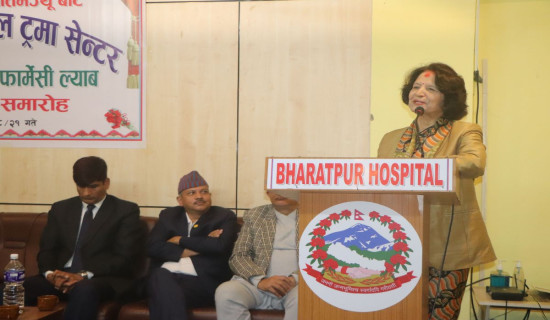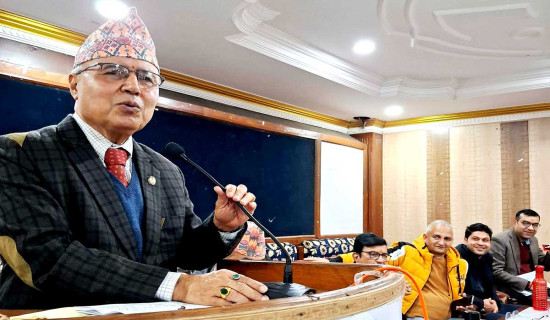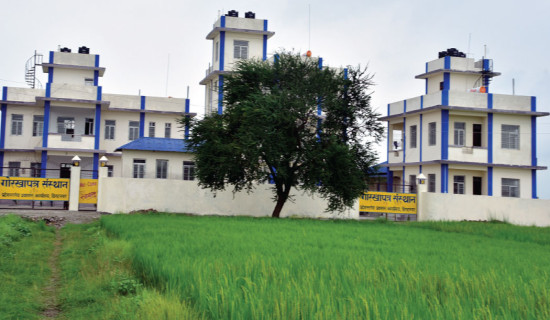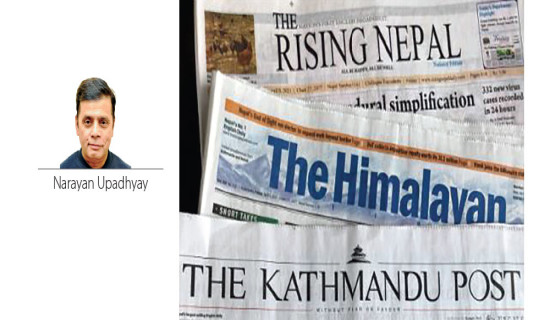- Monday, 8 December 2025
Opportunities And Challenges In Digital Era
Gorkhapatra daily is a reputed and respected newspaper in Nepal's vibrant media landscape, with a long history dating back to its initial publication on May 6, 1901. For nearly a century, the publication has had a prominent position in the country's media sector, serving as a vital platform for influencing national discourse and information dissemination. Since its inception, the paper has been in continuous circulation and has observed almost every historical, social, and technical development within and outside of the country. As a state-owned newspaper, it has had the unprecedented privilege of inheriting all kinds of technology introduced in the newspaper publishing field.
However, despite being a prominent state-owned paper, Gorkhapatra has experienced both opportunities and challenges in today's world of rapid technological advancement and changing preferences of readers and advertisers. Analysing Gorkhapatra's legacy and the issues it faces in adapting to Nepal's evolving media climate might be a valuable exercise on the occasion of the paper's 124th anniversary that falls today.
Favourite newspaper
Gorkhapatra has been a favourite newspaper of many readers over the years due to its devotion to journalism and detailed coverage of both local and international events. Because of its long history, its audience has learned to depend on and regard it as a trustworthy source of information in an age when sensationalism and incorrect, misleading information are being disseminated by many privately held media outlets.
Gorkhapatra's primary aim is to protect the interests of the country and its citizens. One of its most notable accomplishments is its dedication to upholding standards and ethical practices in the dissemination of news and perspectives on current issues. The paper is a shining example of responsible journalism, standing firm in its pursuit of journalism that emphasises that a responsible newspaper must strive to protect and promote people's and nations' interests in the face of an abundance of misleading and biased information dissemination, which is primarily carried out by private news outlets.
Meanwhile, to keep up with the changing times, the first Nepali-language daily has accepted and embraced the digital era, employing web-based digital platforms to engage with readers in innovative ways and reach a larger audience. Its current online presence undoubtedly broadens its reach beyond that of conventional print media, providing a reliable platform for larger domestic and international readers to get balanced reporting and interactive journalism in the modern day. Its internet platform has the potential to be a powerful medium for in-depth discussion and debate on Nepal's issues.
Despite its illustrious history and great efforts to evolve with the times, the daily has its own set of obstacles and challenges. The newspaper struggles to navigate Nepal's current media scenario, marked by the increasing presence of digital media platforms and contents. The rise and spread of social networking sites and digital contents, which have fundamentally transformed how people consume information, is one of the primary issues for Gorkhapatra and its other sister publications, as it must deal with its sluggishness to introduce modern technology, a skilled workforce, and required resources.
We must not forget that the media in Nepal and the international arena has grown increasingly fragmented as a result of the proliferation of social media platforms and online news sources, increasing competition for pulling audiences and revenue via advertising and other means. In this extremely competitive media environment, the Gorkhapatra Corporation (GC) management, whose leadership is nominated by the government, must find ways to stand out while remaining relevant to a generation used to having quick access to news and information via digital platforms.
Meanwhile, financial troubles in the GC have been exacerbated by declining print readership and advertising revenues. The pioneer daily has existed even in the face of dwindling print media audience and income sources. But maintaining high-quality journalism necessitates creative content presentation on both print and online platforms. This also applies to the corporation's other publications, including The Rising Nepal, Yuva Manch, and others.
Most importantly, newspaper management must seek ways and approaches that will allow it to diversify its income streams. Traditional means of revenue from advertising in paper spaces may not be sufficient in the future, when the cost of sustaining paper's acceptability in the media market will be of primary importance. In addition, management must generate enough resources to cover editorial and administrative personnel expenses.
Similarly, a number of advisers and 'redundant staff' hired by the government to operate the Gorkhpatra need extra resources, which must be acquired through advertisements since the government does not allocate budget to the GC as it does by providing enough resources to other state-owned media institutions — Nepal Television, RSS, and Radio Nepal. The government provides a small budget to the GC to bring out a separate language section in the daily. Every day, the printing of a 30-plus language section is a significant component of the daily that is aimed at promoting Nepal's federal democratic governance system.
Online earnings
It is worthwhile to mention that in order to cover the ever-increasing costs of operating the publication, the GC management must aim to generate substantial revenue from the use of its digital platforms.
Domestic and international readers may contribute to its resource-generating efforts via online earnings, since platforms like YouTube and Google can give it dollars if the paper's readership continues to grow to tens of millions. In recent years, even individual YouTubers, content producers, and social media influencers have made millions via Google and YouTube.
If a newspaper like Gorkhapatra Daily is properly maintained and marketed in the current era of increasing digital presence in Nepali society, it may do wonders. The experiences of Gorkhapatra in Nepal's changing media terrain demonstrate both the accomplishments and problems of traditional print journalism in the digital age.
Although the newspaper's legacy of journalistic integrity and commitment to public service continues, it needs to show efficiency in embracing changing preferences of readers, technological improvements, and budgetary constraints. Even so, Gorkhapatra is a pillar of Nepali media, unrelenting in its dedication to informing, teaching, and empowering the people. As a bright example of journalistic integrity in Nepal, Gorkhapatra can handle the challenges of today's media ecosystem by embracing digital innovation, upholding ethical standards, and safeguarding editorial choices.
(Upadhyay is a former managing editor of this daily.)





-square-thumb.jpg)











